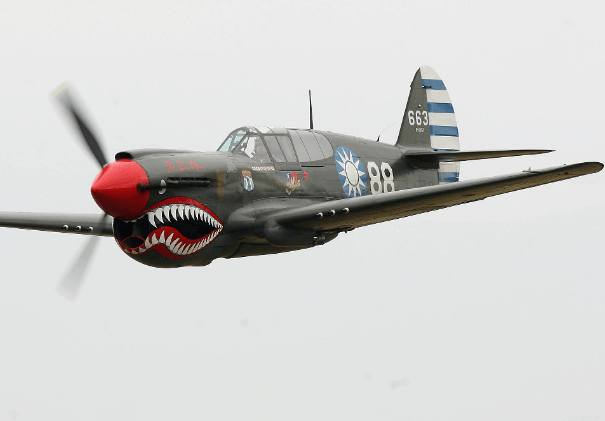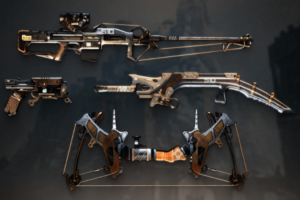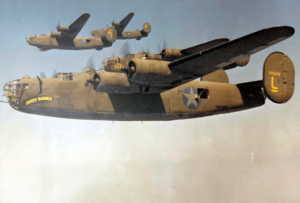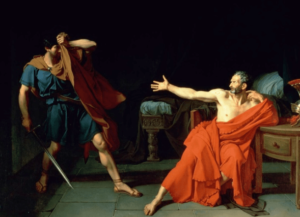As the deadly rain of bullets ate away at the metal and wreaked havoc on the fighters’ air force, huge factories on the ground churned out frames for these aircraft to replace losses in the sky.
Many of these aircraft will be remembered for their contributions to the war effort. Their lethal designs still evoke powerful feelings of respect and admiration today.
Here are five of the greatest fighter planes to take to the skies during World War II.
List of Top 5 Best WW2 Fighter Plane
1. Mitsubishi A6M Zero
With its excellent manoeuvrability and fairly long range, the Japanese Zero was considered the best carrier-based fighter of the entire war. During the first few years of America’s entry into the war, the Zero outperformed all American fighters.
The Zero was greatly respected and feared by American pilots, especially after it achieved a kill ratio of 12:1 during the first months of the war between Japan and the United States in the Pacific.
The Americans quickly adapted and introduced measures to level the playing field, and by mid-1942, they had achieved parity with Japan’s aerial kill rate. By 1944, the Zero’s firepower, armor, and speed were finally matched.
As production was delayed and American bombers were unable to reach mainland Japan, better versions of the aircraft were difficult to construct. Nonetheless, the Mitsubishi A6M remained in service until the end of the war, often as a kamikaze weapon.
The backbone of the Imperial Japanese Naval Air Force during World War II, the Zero is revered as a classic and lethal fighter.
2. Hawker Hurricane
Not many planes get baptized by a king and later go out to save the country. But the Hawker Hurricane did just that. The Hurricane was designed as an eight-gun monoplane fighter by legendary British aeronautical engineer Sidney Camm and first flew in 1935.
The plane was equipped with Rolls-Royce Merlin engines for a top speed of 340 mph and eight generous Browning engines. .303 machine gun. The aircraft entered service with the RAF in June 1936 and was officially named “Hurricane” by King Edward VIII in July.
In 1940, after conquering France and the Low Countries, German dictator Adolf Hitler turned his attention to the British Isles. The German Luftwaffe attempted to gain air superiority over the RAF as a first step toward an invasion, and the Battle of Britain began.
During the battle, the Luftwaffe lost 1,887 aircraft, more than half of which were shot down by the Hurricanes. Invasion plans were cancelled, and Britain became the stage for the liberation of Europe four years later.
The Battle of Britain is perhaps the most important victory in Air Force history, largely due to the Hawker Hurricane.
3. Messerschmitt Bf 109
When the Messerschmitt Bf 109 entered service in 1937, it was one of the most advanced fighter aircraft of its time. Built with an all-metal construction shell, this aircraft entered combat service as soon as it was invented, serving as part of the German Condor Legion that supported Franco’s nationalists during the Spanish Civil War.
The Bf 109 was produced in large numbers, with a total of 34,248 units produced by April 1945. With such huge numbers operating over Europe, Africa and the Mediterranean, the Bf 109 is also the world’s costliest fighter aircraft.
The Bf 109 accounted for more than 20,000 kills, including all 352 planes shot down by Erich Hartmann, one of the most prolific fighter aces of all time. With its distinctive nose cone, usually painted yellow, this fighter was easily recognizable and terrified the enemy for eight years before being retired by the Luftwaffe following the defeat of Nazi Germany in 1945.
Ironically, this aircraft found new life as part of the Israeli Air Force and saw action during the 1948 Arab-Israeli War.
4. Consolidated B-24 Liberator
The B-24 was harder to fly and less beloved than the B-17; it had a greater impact on the war. The B-17 Flying Fortress is generally considered the “face” of World War II heavy bombers. The real MVP of Allied long-range bombing was actually the Consolidated B-24 Liberator.
Armed with ten .50-caliber M2 machine guns and carrying up to 5,000 pounds of bombs on long-range bombing missions, the four-engine B-24 conducted a large number of strategic bombing raids against targets throughout the war, as far away as Berlin, Germany and southern Japan.
America’s Arsenal of Democracy produced 18,482 B-24 bombers, compared with 12,732 B-17 Flying Fortresses. The B-24 was also faster than the B-17 and could carry 2,000 pounds more worth of bombs. This made the B-24 more important to Allied strategy than the B-17 due to sheer numbers alone.
5. Focke Wulf FW-190
Arguably one of the best fighter planes of World War II, the FW-190 was introduced to the German Luftwaffe in 1941 and was produced in significant quantities to augment the Bf 109, which formed the backbone of the Luftwaffe. Powered by large BMW engines, the plane can reach a top speed of 410 mph.
The main characteristic of the FW-190 was its excessive armament. It had a machine gun mounted in the nose, a 0.8-inch cannon in the wing root, and two more cannons mounted in the centre of the wing.
It was a much more powerful machine than the Bf 109, and German pilots who flew both aircraft preferred the FW-190 as being far superior.
Developments that continued throughout the war made the FW-190 even more powerful, and its immense popularity resulted in more than 20,000 being produced.



